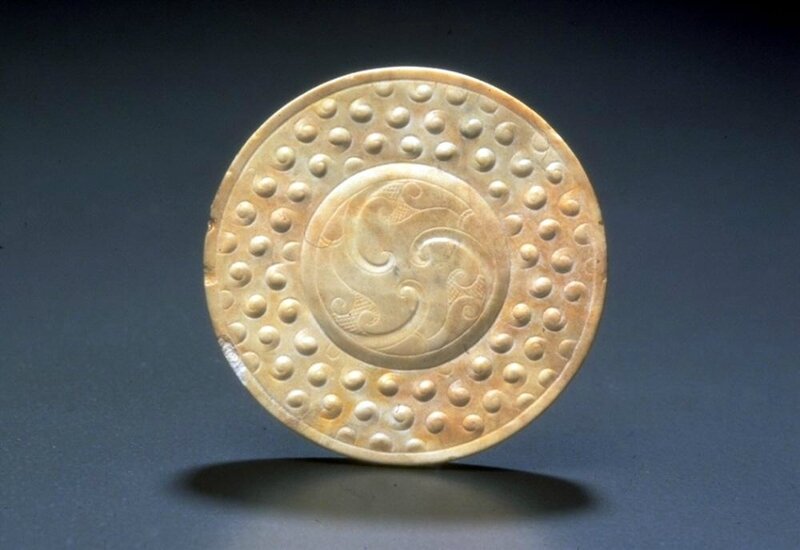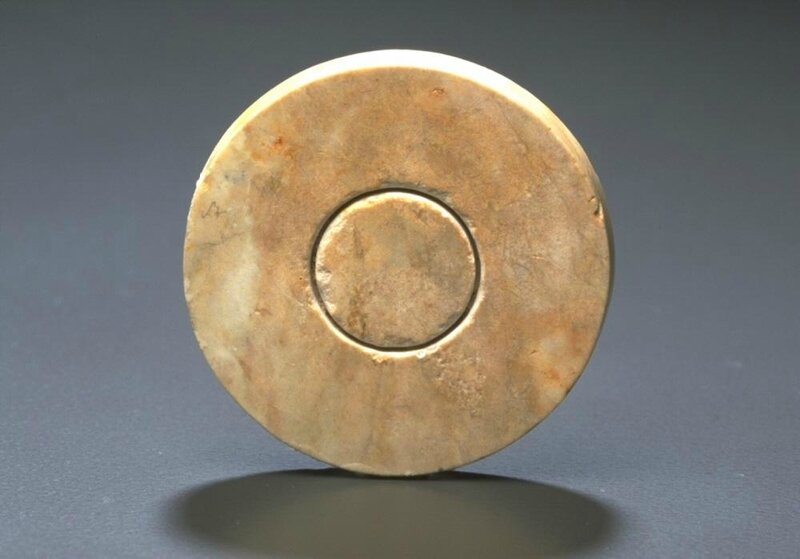![A rare small Longquan celadon 'bamboo' vase,xianwenping, Southern Song-Yuan dynasty, 12th-14th century]()
![4]()
![5]()
![6]()
Lot 1536. A rare small Longquan celadon 'bamboo' vase, xianwenping, Southern Song-Yuan dynasty, 12th-14th century, 6 ¾ in. (16.8 cm.) high. Estimate USD 40,000 - USD 60,000. Price realised USD 93,750. © Christie's Images Ltd 2016
The compressed, spreading body is encircled by three rings, with two more on the shoulder, and the tall neck is encircled by two bow-string bands, in imitation of bamboo, below the wide, galleried mouth with incurved rim, a section of which broke off during firing and became adhered to the side of the neck. The vase is covered overall with a glaze of slightly blue-green color ending just above the unglazed foot rim., Japanese wood box.
Provenance:
Masuda Donou (1848-1938) Collection, Japan.
Takahashi Souan (1861-1937), Japan.
Japanese dealer's auction of the Takahashi Family Collection, 1918..
Note: As with other vases of this form, the raised encircling rings at the junction of the shoulder and neck, on the neck and one of the lower rings on the body, disguise luting lines, and give this type of vase one of its Chinese names, xianwenping ('string pattern vase').
The present vase is unusually small for a vase of this type. Taller versions (approximately 31 cm. tall) are illustrated in The Complete Collection of Treasures of the Palace Museum - 33 - Porcelain of the Song Dynasty (II), Hong Kong, 1996, pl. 103; in Celadons from Longquan Kilns, Taipei, 1998, p. 147, no. 114; and in Illustrated Catalogue of Celadon Wares in the Percival David Foundation, rev. ed., 1997, pp. 19 and 30, no. 202. Similar vases, in the range of 27 cm. tall, include two sold at Christie's New York, one from the Falk Collection, 20 September 2001, lot 119, the other 19-20 September 2013, lot 1276.
![A rare Longquan celadon 'bamboo' vase, xianwenping, Southern Song dynasty, 12th-13th century]()
A rare Longquan celadon 'bamboo' vase, xianwenping, Southern Song dynasty, 12th-13th century, 10¾ in. (27.3 cm.) high. Sold for USD 423,750 at Christie's New York, 19-20 September 2013, lot 1276 © Christie's Images Ltd 2013
Vases of this type were much admired in Japan, both for their elegant form and the beauty of their glaze. They were among the cargo of the Sinan wreck, which foundered off the Sinan coast of Korea on its way to Japan in AD 1323. See National Museum of Korea, Sinan Wreck Exhibition, Seoul, 1977, no. 15. One (29.8 cm.) in the Nezu Museum, Tokyo, is illustrated by M. Tregear in Song Ceramics, New York, 1982, p. 172, pl. 232, as well as in Sekai Toji Zenshu, vol. 12, Song, Tokyo, 1977, no. 81. The Nezu vase has been designated by the Japanese authorities as an Important Cultural Property, an indication of the respect with which such pieces are regarded. The present vase, with its section of rim adhered to the neck during firing, also attests to how highly valued vases of this type were, as it was not only saved after firing, but was considered valuable enough to pass into various important collections over the years.
![Vase with Tall Neck, Longquan ware, China Southern Song dynasty, 12th century, Important Cultural Property]()
Vase with Tall Neck, Longquan ware, China Southern Song dynasty, 12th century, h: 29.6cm, md: 8.3cm, bd: 12.0cm, [40346]. Important Cultural Property. © The Nzeu Museum.
Christie's. Fine Chinese Ceramics & Works of Art part II, 17 - 18 March 2016, New York










































